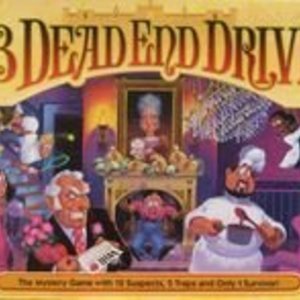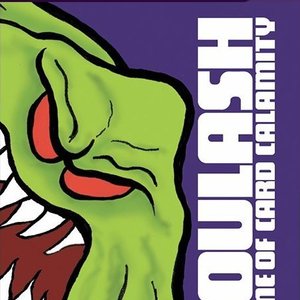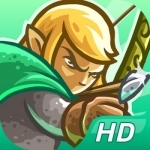
Kingdom Rush Origins HD
Games and Entertainment
App
***Best Mobile Game 2015 DICE Nominee*** The most addicting tower defense game returns in an...
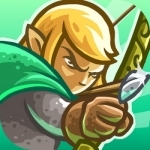
Kingdom Rush Origins
Games and Entertainment
App
***Best Mobile Game 2015 DICE Nominee*** The most addicting tower defense game returns in an...
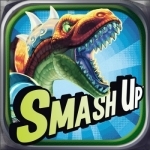
Smash Up - The Card Game
Games and Entertainment
App
***“It’s a goofy theme with fun art and high replayability, but beneath that veneer of casual...
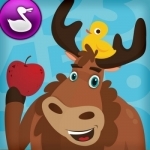
Moose Math - by Duck Duck Moose
Education and Games
App
Moose Math engages kids in a mathematical adventure and teaches counting, addition, subtraction,...
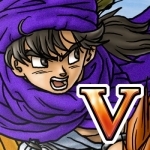
DRAGON QUEST V
Games
App
******************** This grand adventure, unfolding over three generations, is now available to...
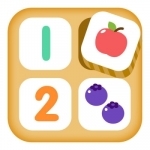
Todo Number Matrix: Brain teasers, logic puzzles, and mathematical reasoning for kids
Education and Games
App
4.5 stars! "Todo Number Matrix is a unique math app that does a great job targeting a wide audience...

Coin Ticker - Bitcoin, altcoin tracker & portfolio
Finance and Business
App
Coin Ticker can help you monitor bitcoin and altcoin market price, you can also use this app to...
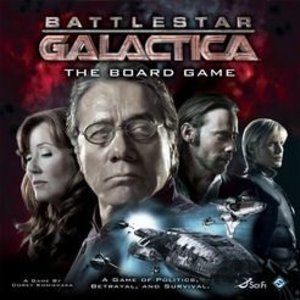
Battlestar Galactica: The Board Game
Tabletop Game
Battlestar Galactica: The Board Game is an exciting game of mistrust, intrigue, and the struggle for...
Matthew Krueger (10051 KP) rated 13 Dead End Drive in Tabletop Games
Jul 17, 2020 (Updated Jul 18, 2020)
13 Dead End Drive is a murder-themed board game originally from Milton Bradley. Released in 1993, it was followed in 2002 by a sequel, 1313 Dead End Drive. Currently, Winning Moves Games USA Winning Moves publishes the game in the USA.
The story behind the game involves the death of a wealthy old woman triggering a feud over her will. The players utilize traps located on the game board, which represents a mansion, to kill characters controlled by other players in order to claim the estate for themselves.
The Gameplay:
At the start of gameplay, players are dealt "Character cards" which correspond to matching pawns on the board. Since there are 12 characters, it is often the case that players control more than one character. However, which player controls which character is not revealed. Along with the character cards, there are also Portrait Cards, which determine who the current favorite for the inheritance is, and Trap Cards, which are used to spring traps and knock off other players.
During each turn, a player rolls two dice and moves two pawns, one pawn for each die. It is legal for players to move a pawn that is not theirs in order to bring it closer to or onto a Trap Space. All pawns must be moved off the red chair spaces before any pawns can be moved a second time or onto a trap space. If a pawn is moved onto a trap space by exact roll only, the player must have the corresponding trap card in his or her possession in order to spring the trap. Springing traps is not mandatory, however. After that, play proceeds on to the next player. A pawn can not pass through or land on the same space as another pawn during the same turn.
During the game, a Portrait Card is displayed in the picture frame above the fireplace. That character is now the current favorite to inherit the fortune. At that moment, for all intents and purposes, that character is now marked for death and must try to escape the mansion before he or she is either knocked off or the portrait changes (see "Special Spaces and Rules" below).
Also, during the game, a Detective is waiting outside, slowly advancing toward the front door. His arrival signifies the reading of the will and the announcement of the winner. The Detective can only move one space at a time, and only when a Detective Card (hidden inside the Trap Card pile) is drawn. There are 13 steps to the front door. If the Detective makes it to the front door before all other characters have been eliminated, the game is over.
Ways to win:
There are three ways to win 13 Dead End Drive:
Be the last character alive.
Escape the Mansion while your character's picture is displayed in the Picture Frame.
Have your character's picture displayed in the Picture Frame when the Detective reaches the front door.
Traps:
13 Dead End Drive has five different booby traps that are used to dispose of other characters. In the story of the game, the traps are designed to make deaths appear accidental. The traps are the Chandelier, the Bookcase, the Stairs, a Statue in a suit of armor, and the Fireplace: if a pawn has the misfortune to land on the trap space in front of or under one of these traps, the Trap card is played and the trap is sprung in the following ways:
To activate the Chandelier, flip a switch in the music room that drops the chandelier onto the pawn, eliminating it from play.
To activate the Bookcase, move that pawn up onto the top of the ladder and rest that pawn on top of the bookcase in the library, and flip a switch that will send the pawn flying back onto the board and eliminating it from play.
In order to activate the Stairs, a player can move it up onto the top of the stairs in the hall and flip a switch that will violently toss the pawn back down the stairs and onto the board, resulting in its elimination.
To activate the Statue, in the gallery, a player can flip a switch that will send a statue in a full suit of armor crashing down onto the pawn.
The Fireplace is activated in the dining room when a player flips a switch that will send the pawn flying backwards and into the figurative fire, though the box describes it as a Trap Door.
When a player moves a pawn onto a Trap Space, they must draw a card from the Trap Card pile (if they do not already have the matching trap card in their possession). If the player draws the matching Trap Card, they can either play it immediately or hold the card for future use. If the player does not have the matching Trap Card, the trap cannot be sprung, but the card can be saved for future use. There are also "Wild" Trap Cards which permit all traps to be used anytime a pawn is in that space. If, however, the player draws a Detective card, the Detective is moved one space forward, but the player is permitted to draw another Trap Card before ending the turn.
Once a trap is sprung, that pawn and the matching Character Card are laid down on the "Discard" pile on the board (the couch). If during the course of play, a Portrait Card comes up for a character that has been knocked off, that card is immediately taken down and placed on the "Discard" pile, revealing a new Portrait. The Portrait cards are shuffled at the beginning of gameplay and concealed by an "Aunt Agatha" portrait card to hide the known deck order.
Special spaces and rules:
Rolling Doubles: If a player rolls doubles that player chooses whether or not to move the current Portrait card to the back of the pack to reveal new Portrait. The player then has the choice of:
Moving one pawn the total number of spaces shown on the dice, or
Moving two pawns, one pawn for each die.
Secret Passages: On the board are special spaces that represent "Secret Passages."
Any character can enter any secret passage at any time, regardless of whether or not it is by exact roll. Moving from one secret passage to another counts as one space move for a character. Secret passages are often used to bring opponent's pawns closer to traps or to bring a player's own pawn closer to the door.
Bluffing: Bluffing is permitted in "13 Dead End Drive." In terms of strategy, a player may move their own pieces towards or even onto trap spaces in an attempt to fool opponents. Even if that player has the matching trap card for the space their own character is on, they do not have to play it. Instead, they can pretend that they do not have the correct card and draw another one. If they happen to draw the right trap card, they can pretend that the card is the wrong one, and play continues as normal.
Its a excellent game, if you like clue than you will love this game. Its a excellent bluff deduction murder mystery game.
Purple Phoenix Games (2266 KP) rated Ghoulash: The Game of Card Calamity in Tabletop Games
Sep 3, 2019
In Ghoulash: The Game of Card Calamity (which I will shorten to Ghoulash for the purpose of this review – even though there is the OG Ghoulash as well, I think you know what I’m talking about) players are Ghoul hunters. Ghouls are monstrous green blobsters that are coming for you. You fight them by shooting Ghoo, a purply substance, at them to exploit their weak spots and vanquish them. The first Ghoul hunter to reach 10 Victory Points (VPs) will be crowned the winner!
DISCLAIMER: We were provided a prototype copy of this game for the purposes of this review. As this is a preview copy of the game, I do not know if the final rules or components will be similar or different to what we were provided. -T
To setup the game, shuffle the deck and place a 6×3 grid of cards in the middle of the table. This is the “floor” and will be the game board for the duration of the game. When the floor is out of cards (I will explain), set out a new 6×3 grid floor and continue play. Deal each hunter a hand of seven cards and you are ready to play!
Each of the face down cards that comprise the floor are opportunities for encounters. You, as a Ghoul hunter, will enter the floor from any border card. On your turn you may fill your hand up to your current hand limit – which changes based on whether you have taken wounds or not. Next you must move orthogonally onto a space that contains a card or an empty space, but you must move – or take your Action first, THEN move. If you move to a space with a card, you encounter the card. Depending on what type of card is flipped face up you will be taking cards into your hand, following Command instructions, or fighting Ghouls. When you have finished your turn it is the next hunter’s turn.
Should your flipped card reveal an Action or Special card, you simply collect the card into your hand. If the flipped card is an Battle card (which has Ghoo splats – like the ones pictured above on the far right), you must follow the Command instructions at the bottom of the card before collecting to your hand. And if it’s a Ghoul you will begin battle!
Battling Ghouls is mechanically simple, but the overall battle may not be. When you face a Ghoul its card will tell you what the strength of the monster is (the white number). It could have four, five, or six hit points (HPs). To vanquish the Ghoul you will need to play cards whose Ghoo value (splats) is equal to or greater than the Ghoul’s HP amount. From this point the other hunters can intervene in the battle by playing cards whose battle Ghoo tips the scales toward the Ghoul thus making it more difficult to defeat (a la the ganging up mechanic in Munchkin). As only one hunter may affect the battle in this way, it is the player’s cards whose strength is greater that wins the challenge. Now the original combatant must spend more Ghoo cards to overcome the super-buffed Ghoul. Should the hunter prevail they will collect the Ghoul card and display it in front of them to show the table how many VPs they have earned. If the hunter is unsuccessful in the battle, they suffer wounds in the amount of VPs that would have been awarded with a successful battle (the green dots at the bottom of the card). Wounds are reflected by cards in hand, so if a hunter suffers two wounds, their hand limit is now five instead of the original seven. Play continues in this fashion until a hunter has accumulated 10 VPs and earned victory!
Components. Per my disclaimer, the game that was sent to us is a prototype version of the completed game, so components may (and probably will) change or be improved as a result of further development, and/or a successful Kickstarter campaign. That said, I can comment only on the components that were provided to us. The game is a deck of cards in a deck box. The cards themselves are of fine quality. The art upon them is okay. Nothing too stellar, but it gets the job done. I think the art is one thing that can be improved with development. Don’t get me wrong, the art is not at all bad. Perhaps it’s the card layout or graphic design. Something with a bit more punch would be appreciated.
Our thoughts on this one are that it needs some sprucing up a bit. Yes, it is in prototype format currently, and we know that. The card design needs to be updated a bit, but the game itself was also lacking a bit. One of the major concerns we had when playing through it was the card grid of the floor. We did not use any sort of player marker, token, meeple, or anything to mark our locations, and I really think that may have helped. We just had a hard time visualizing where our hunter was in relation to the face-down cards and how many turns it would take us to travel to them. There were several times where we just guessed as to who was actually closer and they were able to encounter the card. I am unsure how to fix that without supplying a grid or some sort of tracker. We should have maybe just played with meeples or dice for position markers. Oh heck I just thought of this: we could have also placed out dice or whatever on an x and y axis to denote where floor cards should be. Ugh. Battles were run somewhat smoothly, even though there were times where I was down to one card because I had suffered so many wounds and I could not get a First-Aid Kit to save my life (literally). The battle challenges did not work with us and we were trying to find a good way to make them happen, but our minds must not have been at their peak. We weren’t quite sure if, like in Munchkin, you could just add one card to your challenge total, or if you had to commit the entire bunch of cards you wish to play. It is not clear in the rules, so we went with our guts.
Overall, this could be a good dungeon crawler type card game. The theme is good, but for us it didn’t quite click…yet. If it sounds like something you would like to have in your collection, check Kickstarter for the campaign (if Ghoulash Games decides to crowd-fund this), contact the publisher directly, or (depending on date you read this) purchase from your FLGS. Oh, and keep the Ghoo Gone away – this time Ghoo is good for your health!
